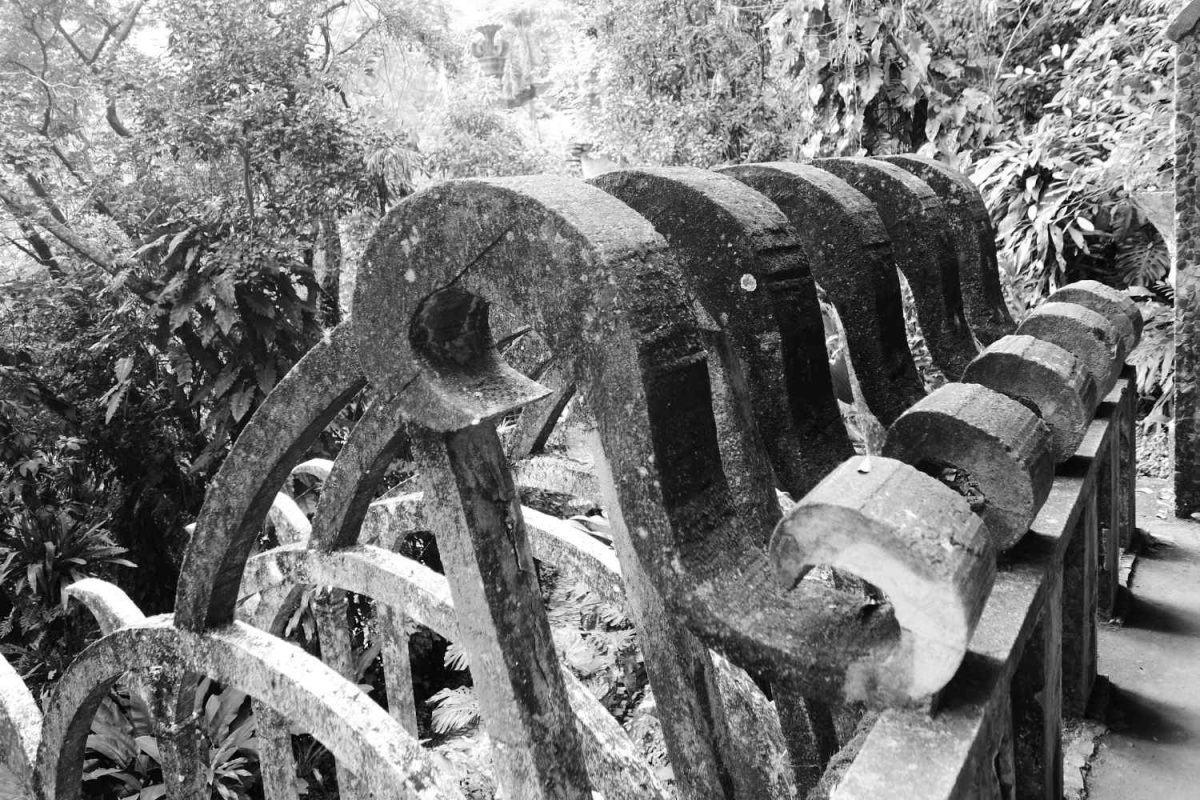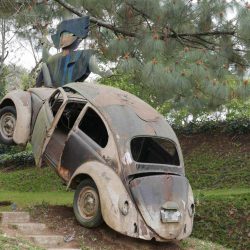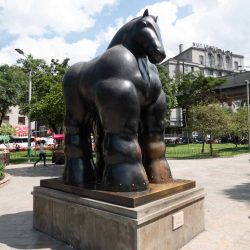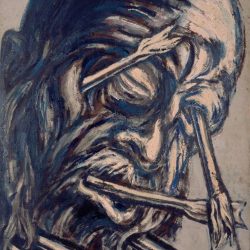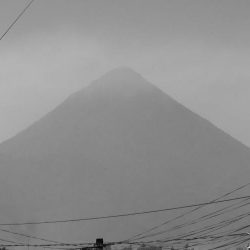There is a long list of books that are considered to be unfilmable. Too complicated to turn the writer’s words into images. So can you turn crazy dreams into architecture, into stone? Las Pozas, the surrealist gardens in a remote village in Mexico, might be the affirmative answer to that.
Nowadays it’s hard to imagine, but Lord of the Rings by J.R.R. Tolkien was long considered unfilmable. Many unsuccessful attempts were made until Peter Jackson released his magnificent trilogy upon the world (and then bored the same world with pushing the repeat button with The Hobbit). Ulysses by James Joyce, a preposterously ambitious literary work, is hard to read and even harder to film as well. Or Catcher in the rye (by J.D. Salimnger) is also a regular on lists of unfilmables.
Fantasy world
Funnily enough, Las Pozas (The Pools) regularly reminds of the work of a Mexican director Guillermo del Toro (a native of Guadalajara by the way). Especially Pan’s Labyrinth, with its fantasy creatures, seems to be inspired by the surrealist work that has been created in this little village in Mexico.
The roots of this fantastic and fantastical place run much deeper of course. All the way to the British royal family even, because King Edward VII was the baptism godfather of Edward James. And this English son of an American mining and railroad tycoon became the creator and brainfather of Las Pozas.
Surrealist art scene
James actually was an important focal point of the surrealist art scene before the Second World War in Europe. He was one of the driving forces behind a magazine and became good friends with nowadays world-famous artists such as Man Ray and Max Ernst.
From 1945 onwards he started looking for a remote location so he could focus on writing and poetry. Somehow he landed in the jungle mountains of Xilitla, about eight hours driving north of Mexico City. And as one story goes, when he was exploring this Huasteca Potosina region, a cloud of butterflies surrounded James and his friend Gastelum when they were bathing in a river.
This of course had to be a magical sign, according to the writer, that this was his own magical place. But maybe the story is much more straightforward: he might just have stumbled upon these beautiful waterfalls and luscious jungle gardens and knew this would be the place for his own Garden of Eden.
White ash
So from 1947 onwards he started to live in this sleepy town. Initially he focused his work on orchids, but these were destroyed by a snow storm in 1962. The locals had never seen that phenomenon before, calling it ‘white ash’.
James then set out on a mega-project that could not be destroyed by snow. He set about turning his surrealist dreams into stone. He sold his collection of art for around 5 million dollar at an auction and employed around 140 local craftsmen at the height of his activity. He never saw his creation entirely finished, as James died in 1984 in northern Italy and the gardens were only officially opened in 1991.
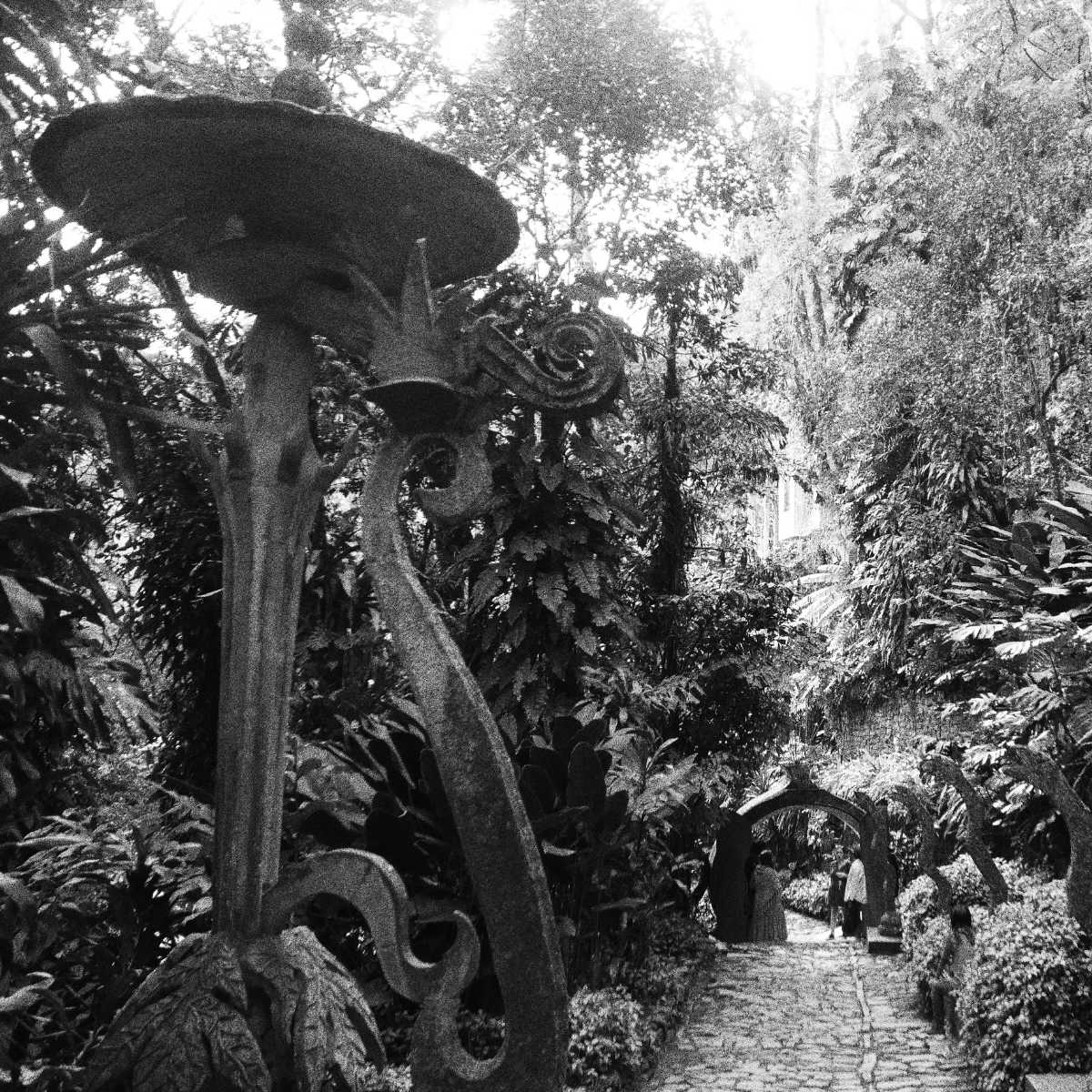
Experiments
‘Finished’ then again isn’t a good word to describe these almost living stone creatures. The famous Italian cook Massimo Bottura is trying to make fantastic accidents happen by experimenting relentlessly, resulting in dishes like ‘Oops! I dropped the lemon tart!’.
Edward James seemed to follow the same philosophy, looking for the beauty of imperfection. There is a thing called ‘The Three-Story House that Might Have Five’. There are spiral staircases leading nowhere. There is a bathtub in the shape of an eye. The Road of the Seven Deadly Sins greets you upon arrival, with its rows of stone snakes. There are unfinished bridges – deliberately unfinished, that is.
You can even discuss whether this is a sculpture garden or a piece of architecture. There is no function in it except beauty, and to instill a desire to explore this labyrinth in its visitors. It is a place to dream, to look for unexpected viewpoints. To have unabated fun by enjoying a swim in the terraced pools. It is a place that explicitly tries to NOT be perfect. It wants to be taken over by nature, or at least coexist with the jungle that surrounds it.
Magical places
It’s not a coincidence Edward James once met Aldous Huxley, the science-fiction writer. Both were dreaming up magical places on this earth. That is what Las Pozas tries to be: A retreat, an escape from daily life, for a couple of hours in the rainforests of central Mexico.
Practical information:
- How to get there: by car it’s fairly easy. Coming from the eastern direction (probably Ciudad Valles) you will see small wooden signs just before entering the village where you have to turn right. Follow the dirt road until the entrance. This area can get very muddy in rain season. More fun obviously is if you stay in Xilitla a couple of nights. In that case you can walk there from the Zocalo (central square, also known as Plaza Principal here). Take the steep narrow road going down left of Casa Viejo cafe, on the northern side. Take the first left. Just follow this nice road with great valley views for around thirty minutes. First you will pass the entrance of the Cascada los Comales (Comales waterfalls), which are actually higher than the ones in Las Pozas and well worth a quick visit. Then you will find the Las Pozas entrance on your left around the corner.
- Length: you need at least 3 hours to explore the site, more if you want to have a swim and explore the cafe.
- Equipment:
- Food and drinks
- Walking pole in rain season (can get slippy)
- Rain gear (we are in the rain forest here!)
- Swimming gear
- Good to know:
- there is an excellent new museum (opened in 2018) with the surrealist art of Leonora Carrington
- at the entrance there are also guides that can show you around. It guarantees you you won’t miss any highlights or background information, but obviously takes away the pleasure of just exploring for yourself
- More information:
- official site of Las Pozas, which also warns of queues in high season
- Some more background information can be found on Wikipedia
- A nice story about the origins of Las Pozas in W Magazine
You can find more pictures here.
